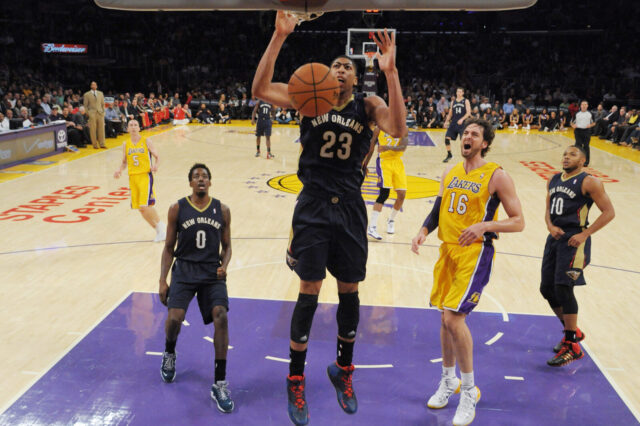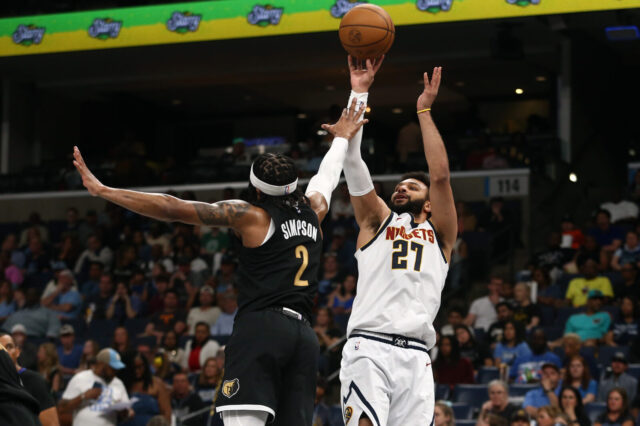Following the acquisition of Andre Iguodala this offseason, many pundits and Nuggets fans alike salivated over getting what they appeared to be missing for so long: an “elite perimeter defender”. We heard that Iguodala’s speed, strength and athleticism would fit perfectly into the Nuggets’ defensive “scheme” of constant switching and man to man defense; Iguodala would allow them to shut down the perimeter and three point threats that so plagued the Nuggets last season.
Nuggets fans were confident that we would finally be able to hold hot shooters in check, and that no matter what, Iguodala would still be an upgrade over the defense provided by Arron Afflalo and Al Harrington. After a deeper look at the numbers, I am no longer sure that Andre Iguodala is the answer to the Nuggets' continued defensive woes and may in fact be contributing to them. Consider the following:
1. Through four games played (not including Houston, small sample size theater notwithstanding), the Nuggets are:
- 13th in opponent 3P% (.364)
- 20th in points allowed (100.5)
- 19th in opponent FG% (.452)
- 20th in opponent points-per-shot (1.21)
- 21st in DRTG (points allowed per 100 possessions), (107.1)
Despite flashes of better rotations and a commendable effort on a back to back contest at Houston, those numbers are all indicators of a team that is, once again, below average on defense. The "defensive four factors" – opponent effective field goal percentage, turnover percentage, defensive rebound percentage, and free throws per field goal attempt – reinforce this picture of a sub-par defensive team, with the Nuggets falling into the bottom half in all categories except opponent turnover percentage, where they are a respectable seventh.
2. Andre Iguodala is not, in fact, an incredible defensive player, or even an average one, when measured by the DRTG statistic. This year, Andre’s DRTG is 107, third-worst of his career. His career DRTG is a below-average 105. Although this is still better than Arron Afflalo’s career 110 and Al Harrington’s 107, the numbers bear out that Iguodala allows 5 more points per 100 possessions than a league-average defender. While it’s important to note that Iguodala’s quick hands – 1.7 steals per game – contribute to his individual defense, he is still allowing a fair amount of points (on average) to his matchups.
3. Of the starting 5, the only player that even begins to approach a league average defensive rating is Kenneth Faried, with a career 103. Kosta Koufos (105), Andre Iguodala (107), Ty Lawson (109), and Danilo Gallinari (111) are all below-average defenders when evaluating them using the DRTG metric.
CORRECTION: This year, league average DRTG is 103.3 (click the DRtg header to sort). This would suggest that Faried, Koufos, and Iguodala are closer to the "DRTG Average" than I have otherwise implied. Additionally, DRTG is better used as a team stat, and is not very valuable when applied to individual player defense.
Thanks to rxmart2, Iguodala_fan and others for bringing these things to my attention.
– Colin
Now, I'll be the first to say that it's silly to judge a team solely based on a single metric and this early in the season, with 77 games still to be played. Admittedly, DRTG is not a truly exact measure of an individual player's defense, but does suggest a player's overall defensive contribution. The reason I place so much value on the DRTG stat, though, because it is an excellent overall indicator of team defense and is pace adjusted. The differential between ORTG and DRTG is very strongly correlated with winning.
These defensive issues are also not Iguodala's alone. The Nuggets will make adjustments and should be able to make some improvements on both ends of the court, especially on three point shooting, where they rank an appalling 27th in the NBA. Denver still hasn't learned that if you're not so good at threes, it's probably a good idea to not attempt so many.
Even with some fairly good individual efforts (like Iguodala’s defense against James Harden last night), the signs that the defense shows at this point are very troubling: year over year, the team defense has actually gotten worse, coinciding with a precipitous decline in offensive efficiency, despite Karl’s assertion of focusing on defense throughout training camp. Even the eye test bears out what the sometimes-misleading numbers tell us: the Nuggets have looked slow and frequently confused on rotations on the perimeter, opponents are still making an above-average number of threes, and we’ve been torched on the interior by the likes of Spencer Hawes, Glen Davis, Greg Monroe and Patrick Patterson (to say nothing of Chris Bosh’s 40-point outburst).
The Nuggets are still coming together as a team, clearly. Despite a long offseason, training camp and preseason, this is a young group of players who are in the process of discovering their team identity. There will be growing pains and adjustment periods.
Yet while the team adjusts, comes together, and figures out both an offensive and defensive identity, the rest of the NBA may pass them by. Without significant improvements on both ends of the floor, forget securing a top four seed. Everyone's favored possible top-seed Nuggets could find themselves out of the playoffs altogether.


